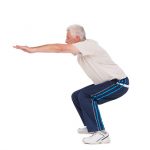 Vasovagal syncope is a common cause of fainting, yet until now few prevention tools have been suggested for those who experience it. Now there is evidence that suggests simply sniffing and gasping can help people avoid the problem.
Vasovagal syncope is a common cause of fainting, yet until now few prevention tools have been suggested for those who experience it. Now there is evidence that suggests simply sniffing and gasping can help people avoid the problem.
Dr. Marta Barolarova, a cardiologist from Louis Pasteur University Hospital in Slovak Republic recently presented a study to the European Society of Cardiology that looked at whether interrupting drops in blood pressure and heart rate could prevent fainting.
Advertisement
Researchers examined two people: a 56-year-old woman and a 62-year-old woman – both had vasovagal syncope. When the women had drops in blood pressure they were asked to sniff and gasp twice with their mouths closed and then breathe out. An electrocardiogram (ECG) was then used to measure the women’s blood pressure. In both cases, it did not drop and fainting was prevented.
As Dr. Barolarova explained, the body’s sympathetic nervous system contributes to the increase in heart rate and blood pressure, but sniffing and gasping appear to have a “strong sympathetic effect” that allows for the prevention of vasovagal syncope.
The doctor hopes that a more comprehensive study, involving a larger number of patients, will confirm her findings.
What is vasovagal syncope?
Fainting occurs for a number of different reasons; sometimes it is related to a medical condition. Vasovagal syncope is fainting when your body responds to a specific trigger. For example, when some people experience a stressful situation or see blood, their heart rate slows and they experience drops in blood pressure. Before you know it they feel light headed, dizzy and may even face loss of consciousness.
Vasovagal syncope affects about three percent of men and 3.5 percent of women. Fainting is more common as we age and can happen whether we have a medical condition or not.
Although vasovagal syncope is annoying, it is harmless. The big concern is that fainting can lead to falling and cause injury. In the older population these falls can lead to serious complications.
Common triggers, symptoms of vasovagal syncope
The cause of fainting can be different for each person; however, there are some common triggers. Stress and the sight of blood are just two. Below are some other well-known causes.
- Standing for long periods of time
- Straining (for example, to have a bowel movement)
- Heat exposure
- Fear
- Having blood drawn

There are some signs that you may be about to have a fainting spell. People around you might notice that your pupils are dilated or that you are making jerky, abnormal movements.
Here are some symptoms you might have if you are about to faint:
- Lightheadedness
- Feeling warm
- Yawning
- Blurred vision
- Tunnel vision
- Cold, clammy sweat
- Pale skin
- Nausea
Normally, fainting episodes don’t last very long. Recovery begins quickly – less than a minute later. If you stand up too soon after fainting, you do put yourself at risk of fainting again.
Fainting can also be a sign of a serious health condition, so it is always a good idea to see a doctor if you have had an episode.
Nutrition and diet for vasovagal treatment
 You can prevent fainting through nutrition and diet. The best approach is to stay hydrated and consume foods that promote good circulation and steady blood sugar levels.
You can prevent fainting through nutrition and diet. The best approach is to stay hydrated and consume foods that promote good circulation and steady blood sugar levels.
If we are dehydrated, the amount of fluid in our blood will be reduced and our blood pressure will decrease. As a result, it is harder for our nervous system to stabilize our blood pressure and our risk of fainting goes up.
Research shows that herbs, such as cayenne, ginkgo biloba, licorice and ginger, can help with circulation. As well, many people have reported that chlorophyll, L-cartine and B1 enhances their circulation.
It is worth noting that vitamin C and bioflavonoids – a group of compounds that occur mainly in citrus fruits and black currants – can help maintain the wall strength of blood vessels. Vitamin E helps improve the oxygen supply to cells. When we faint, there is temporarily a lack of oxygen to the brain.
It’s important to eat healthy, well-balanced meals. Studies show that a lack of essential vitamins in our diet can cause anemia, which means not enough red blood cells. This causes low blood pressure, which in turn can lead to fainting.
Having a high-fiber diet is recommended. Foods such as bananas, brown rice, lima beans, spinach, garlic and peas are good options. Limit your intake of animal fats, as well as carbohydrates such as pasta and potatoes. These can cause your blood sugar levels to fluctuate, which can impact your blood pressure.
Eating small meals could also help reduce the number of low blood pressure episodes following meals.
Managing symptoms of vasovagal syncope
For people who experience vasovagal syncope on a regular basis, it can be extremely frustrating; however there are ways to manage the symptoms. Fluid intake is an easy, but important step. People who are prone to fainting but who drink lots of fluids throughout the day tend to do better than those who don’t take hydrating seriously.
In addition to drinking lots of fluids, some people have a low salt-intake issue. It is best to discuss with a doctor how to increase salt intake because increasing fluid intake at the same time is vital. Avoiding alcohol is also a good idea if you tend to faint because it dilates the veins and arteries. This can take blood away from the central circulation system.
Many people who experience loss of consciousness don’t have issues with food or fluids. They just need to focus on avoiding situations that might bring on symptoms. Here are a few tips: avoid standing for long periods of time, do not look when blood is being drawn, avoid saunas or lying on a hot beach, and do not exercising to excess.
There are certain physical movements that are helpful in raising blood pressure, thus helping to avoid the symptoms of fainting. Below are some simple movements:
- Squatting

- Standing with one leg on a chair
- Bending forward from the waist (such as leaning on a shopping cart)
- Leaning forward with hand on knees when sitting
- Elevating the head of the bed slightly
- Flexing your leg muscles and shifting your weight when standing still
Treatment options for vasovagal syncope
Treatment for vasovagal syncope depends on what is causing it. Some people are prescribed medications to control their symptoms and number of episodes, but there are alternatives. For some people simple changes to diet make a big difference, while others take special precautions, such as being extra careful when standing up and avoiding trigger situations.
It’s important that your family and friends are aware of the symptoms that lead to fainting and are ready to help you if you have an episode. For instance, helping you to lie down and put your legs up is a good first step. Biofeedback training is also an option that some people have found successful. Biofeedback has been known to help control heartbeat.
Advertisement
A lot of people who faint have associated heart problems. These people often see improvement when they receive treatment for structural heart disease. Implanting a pacemaker to keep the heart rate regular is also a consideration for some patients. There are also implantable cardiac defibrillators. These devices actually monitor heart rate and rhythm on a constant basis and correct the abnormal rhythm. Again, this would only be for those who have known heart issues.
For those who have circulation issues that could be leading to the fainting spells, something as simple as wearing supportive garments, such as compression stocking, can often help. Additionally, elevating the head of the bed while sleeping or leaning back in a recliner with your feet up can be helpful.
With proper diagnosis and care, vasovagal syncope can be managed; however, it is important to know that if you have had syncope, there is a 30 percent chance that it will happen again. You should discuss this with your doctor, especially if you are a driver. You would not want to get behind the wheel of a car and hurt yourself or someone else due to loss of consciousness. The sooner you get to the source of the fainting, the sooner you can find ways to control it.
